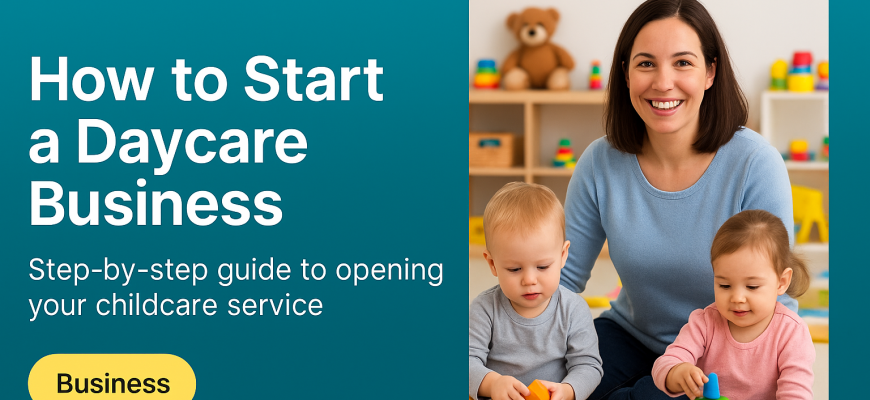As a business coach for women, I believe that launching a daycare can be both deeply fulfilling and profitable. Childcare entrepreneurs play a vital role in supporting families and shaping young lives. Women often bring natural empathy, patience, and organizational skills to childcare – qualities that parents value highly. In fact, a leading women’s business magazine notes that women are “uniquely positioned” to succeed in childcare, thanks to home-based possibilities and flexible schedules that fit family life. With more than 23% of children under five attending daycare, demand is strong. This means your services can quickly become a lifeline for busy families. Moreover, many daycare owners report that with careful planning and quality care, the business can be lucrative. Industry reports confirm that women-led daycare centers frequently achieve profitability by blending nurturing care with solid business practices.
Women who start daycares often find the work meaningful: every day, you’d witness children’s growth and gain trust from families. A recent feature points out that childcare is a rewarding career, offering the chance to support families and have an impact on children’s lives. Beyond personal satisfaction, a daycare business can provide stable income and even grow into a multi-location venture. By meeting a real community need, your daycare can transform a passion for childcare into a steady, thriving enterprise.
Why Childcare is a Great Choice for Women
-
Nurturing Skills: Many women have innate empathy and patience, ideal for caring for young children. This natural aptitude means you’re already a step ahead in creating a warm, safe environment where kids learn and play.
-
Flexible Schedule: Childcare businesses often allow flexible hours. You could run a home-based daycare or adjust hours around your own family life. This flexibility can let you balance work with other commitments.
-
High Demand: With a growing population of working parents, the need for quality daycare is rising. Research shows about 23% of pre-school children attend daycare – and many parents are willing to pay for trusted care. This steady demand can translate into consistent bookings and revenue for your business.
-
Home-Based Options: You can start small, even from your own living room or backyard, keeping overhead low. Many states allow family homes to care for a limited number of children, making startup costs relatively low compared to other businesses.
-
Personal Fulfillment: As women entrepreneurs reinvest in their families and communities, your success has a ripple effect. Experts note that women-led businesses often reinvest earnings into households and economies, creating transformative impact. By providing excellent care, you’re not only earning income but also giving families peace of mind – and that’s incredibly rewarding.
Steps to Start Your Daycare Business
-
Conduct Market Research & Write a Business Plan: Start by understanding local needs. Research how many daycare programs already exist in your area, what age groups they serve, and whether there are waiting lists. Gathering data on local population (number of working families, ages of children, income levels) will reveal whether demand is strong. In your business plan, spell out your mission, the types of services you’ll offer (full-day care, after-school care, etc.), and your goals. A solid childcare business plan should include market research, a site needs assessment, financial projections (for at least the first 1–3 years), a marketing strategy, and policies for staff and families. Planning your budget at this stage is crucial: experts estimate the cost to open a daycare often ranges from $10,000 to $50,000, depending on size and services. This budget must cover rent or mortgage, equipment, supplies, licensing fees, and initial wages.
-
Understand Licensing & Legal Requirements: Childcare is heavily regulated for good reason. Every U.S. state sets rules for daycare businesses, from health and safety training to child-to-adult ratios. Learn your state’s regulations early: most require background checks for owners and staff, CPR/First-Aid certification, and training in child health and safety. For example, many states expect lead providers to have a Child Development Associate (CDA) credential or higher. You’ll need to apply for a child care license through your state agency; this involves inspections and meeting standards for sanitation, emergency preparedness, and more. Tip: Contact your local Child Care Resource & Referral office or licensing agency to get a checklist of requirements. Being fully licensed not only keeps children safe, but also builds parents’ trust in your program.
-
Choose Your Location and Set Up the Facility: Decide whether you’ll run a home-based daycare or rent a commercial space. Home daycares are often less expensive to launch, while a center can accommodate more children. If not at home, look for an accessible, child-friendly space (near neighborhoods or workplaces) and check zoning rules – most cities require a permit or specific zoning approval for childcare facilities. In either case, childproof the environment thoroughly: sanitize all areas, secure shelves and cabinets, install safety gates, and provide age-appropriate toys and furniture. A welcoming layout with separate spaces for play, meals, naps, and diapering is ideal. Ensure your location meets state licensing guidelines (for example, enough exits and bathroom access).
-
Design a Curriculum and Daily Routine: Even if you plan a play-based, flexible approach, having a basic curriculum shows professionalism and helps children learn. Decide what daily schedules look like: include time for structured activities (art, music, circle-time), free play, meals, and rest. Your curriculum should be age-appropriate: infants need a different environment than preschoolers, for instance. Research early childhood education principles or state guidelines to incorporate learning domains (language, motor skills, social-emotional learning). Consider themes or educational focuses (nature, science, literacy) and plan simple lesson ideas or activities. A clear curriculum plan reassures parents that their children will be stimulated and cared for throughout the day.
-
Hire and Train Staff: Initially, you might run a very small or home-based program by yourself, but as you grow, you’ll need reliable staff. When hiring, prioritize caregivers who love children and have the required credentials. Depending on state law, lead teachers in daycare centers often must have at least an associate’s degree in Early Childhood Education or a CDA credential. At a minimum, all staff (including you) will typically need CPR, first-aid, and any food-handler certificates required by your state. Conduct thorough background checks on every employee. Also establish clear job descriptions: who supervises which age group, and what each person’s daily duties are. Regular training is key – stay updated on child development best practices, behavior guidance, and safety protocols.
-
Plan Your Marketing and Outreach: Even the best daycare needs clients! Start by giving flyers or business cards to pediatricians’ offices, libraries, and community centers. Create a friendly, informative website describing your services, philosophy, and enrollment process; optimize it so local parents can find you online. Use social media (Facebook, Instagram) to share photos and stories (while respecting privacy) that highlight your caring environment. Encourage word-of-mouth by building relationships – happy parents will refer friends. You might also list your daycare in local child care directories or on referral agency websites. Consider offering a grand-opening special or hosting a small open-house for neighborhood families. Marketing should be ongoing: for example, a simple email newsletter or community bulletin board updates help keep your name top-of-mind.
-
Set Up Your Budget and Pricing: From the start, keep careful track of expenses (rent, utilities, food, supplies, insurance, staff wages) and revenue. Decide on your pricing model: common approaches include charging hourly/daily rates for drop-in care or weekly/monthly tuition for full-time enrollment. In setting rates, survey other daycares in your area – that “market rate” is a steady starting point. For example, contact several local centers or use state data (e.g. via Child Care Resource offices) to see what families typically pay. Factor in your costs and the profit you want. If you provide extra perks (organic meals, extended hours, enrichment classes), you can charge more, but be sure those costs are covered. Consider charging a one-time registration fee or supply fee as well. Remember to account for taxes and set aside a reserve for emergencies. Revisiting your budget regularly helps you avoid surprises and plan for growth.
Key Considerations and Checklist
-
Safety Standards: Prioritize children’s safety at every step. Your daycare must adhere to health regulations (cleanliness, safe sleep for infants, first-aid procedures) and building safety (secure exits, gated play areas). Licensing regulations typically cover all this: for instance, a childcare license ensures you follow standards for health, hygiene, emergency plans, and adult-to-child ratios. Childproof every room and keep emergency contact information handy. Regularly review safety policies (fire drills, medication handling) with your team and families.
-
Legal Compliance: Besides childcare licensing, check other legal needs. Register your business (LLC, corporation or whatever suits you) to protect personal assets. Obtain any required permits (some cities have special rules for home daycares). Use a written contract or enrollment agreement with parents that outlines your policies (hours, payment, illness rules). Also consult an attorney or accountant about zoning laws (especially for home providers) and record-keeping requirements for taxes.
-
Insurance: Carry the right insurance to protect yourself. At a minimum, you’ll need general liability insurance (to cover injuries or property damage on your premises) and property insurance (for the space and equipment). If you have employees, you’ll also need workers’ compensation insurance. Consider professional liability (Errors & Omissions) insurance as well, which covers claims of negligence. If you use a vehicle to transport children, include commercial auto coverage. Bundling policies (a Business Owner’s Policy) can be cost-effective. Insurance gives families confidence that your daycare is a secure choice, and it protects your livelihood.
-
Age Group Focus: Decide which ages you will serve. Some daycares focus on infants, others on preschoolers, and some serve a mix. Licensing ratios and curriculum vary by age: for example, infants require more hands-on care than school-age kids. Specializing can help you tailor the space and staffing (e.g. nap areas for toddlers, homework help for school-agers). Whichever you choose, be sure to meet the ratio requirements (e.g. 1 adult per 4 infants, 1 per 10 preschoolers – rules differ by state).
-
Pricing Strategy: Your pricing should cover costs while remaining attractive. You may set different prices for infants versus older kids, or offer discounts for siblings. Consider whether to charge extra for meals, late pick-ups, or special programs. Always align your rates with local standards: experts suggest looking at competitors’ rates and state averages to gauge what families will pay. For example, your state’s Child Care Resource & Referral agency may publish average tuition. Start with rates that cover your expenses and desired profit margin, and be prepared to adjust as you gather feedback.
Tips for Balancing Business and Caregiving
Running a daycare can mean juggling entrepreneur duties and family responsibilities. Here are strategies to stay balanced and avoid burnout:
-
Prioritize & Schedule: Identify the most critical tasks each day. For example, prioritize child health and safety tasks (diaper changes, feedings) and key business tasks (enrolling new clients, billing). Use a flexible time-blocking schedule: assign certain hours to business work and certain hours to family or personal care. Leave some margin in your schedule for unexpected caregiver duties or urgent childcare needs.
-
Delegate and Use Technology: You don’t have to do everything alone. Delegate tasks whenever possible. In your business, hire an assistant or ask family members to help with minor tasks. Outsource duties like cleaning or accounting so you can focus on teaching and family. In caregiving, rely on tools and apps: for instance, use digital calendars for appointments or automated billing software for your daycare. Tools like project-management apps (Trello, Asana) can keep your schedule and to-dos organized without constant micromanagement.
-
Set Clear Boundaries: Define specific work hours and communicate them to clients and family. Let parents know when you start and finish each day, and be firm about late-pickup fees if applicable. Likewise, tell your family (or hire help) about times when you must focus on work. Clear boundaries prevent the business from overtaking your personal life.
-
Build a Support Network: Surround yourself with mentors and peers who understand your dual role. Join local or online groups of women entrepreneurs or childcare providers. As one expert notes, tapping into a network of fellow women business owners provides support and resources. Mentors who’ve been through this journey can offer practical advice on juggling business and family. Don’t hesitate to lean on family or friends for help with caregiving or errands; remember that asking for assistance is a strength, not a weakness.
-
Prioritize Self-Care: You cannot pour from an empty cup. Schedule short breaks and ensure you get enough rest. Even a 10-minute walk or a brief quiet moment can recharge you. Experts emphasize that personal well-being underpins your ability to succeed in business and caregiving. Protect at least one full day off each week for yourself. This way, you’ll be at your best for the children in your care and your own family.
Encouragement and Mindset
Starting a daycare is a brave step, and you’re not alone on this path. Countless women have turned passion into successful childcare businesses, proving that with dedication and heart, you can thrive. Remember: your vision matters. By providing high-quality care, you are giving children a foundation for learning and giving working families peace of mind. Global research reminds us that women-led enterprises have transformative power, enriching households and communities. In other words, when you succeed, everyone benefits.
Believe in your abilities. Many resources exist to help you grow – from Small Business Development Centers to women’s business networks. Invest in yourself through learning and mentorship. Celebrate small victories, and view challenges as learning opportunities. Trust that your skills as a nurturer, organizer, and leader equip you to build something meaningful.
Starting a daycare is both a business venture and a calling. With a solid plan, a heart for children, and the right support, you can create a joyful workplace and a profitable enterprise. You have what it takes: empathy, resilience, and vision. Now is the time to bring your dream to life – one happy child (and satisfied parent) at a time.









